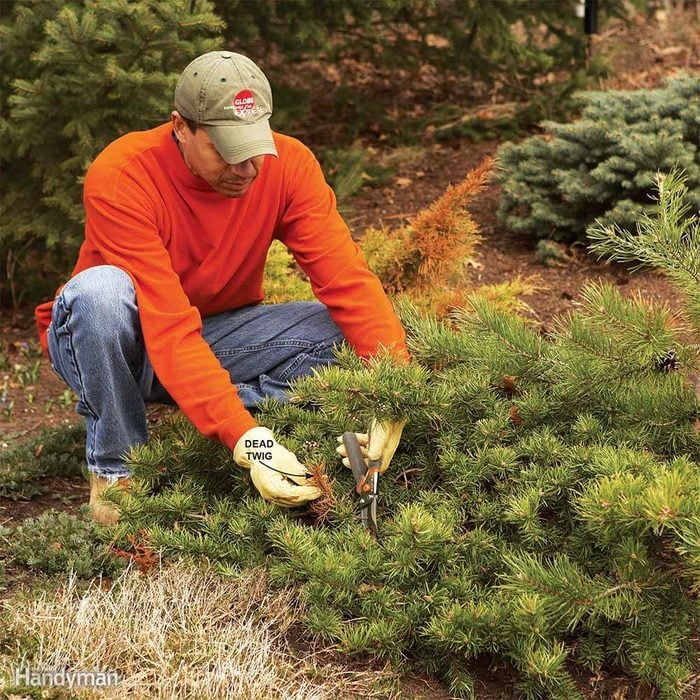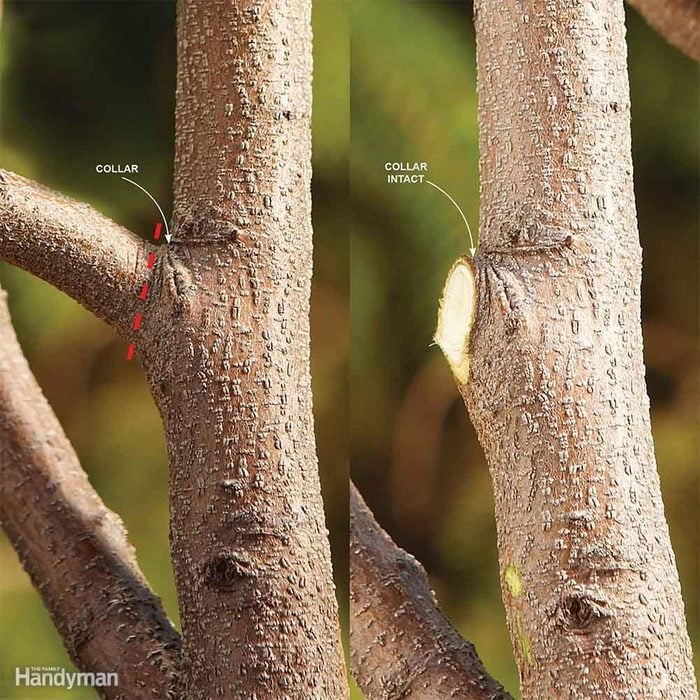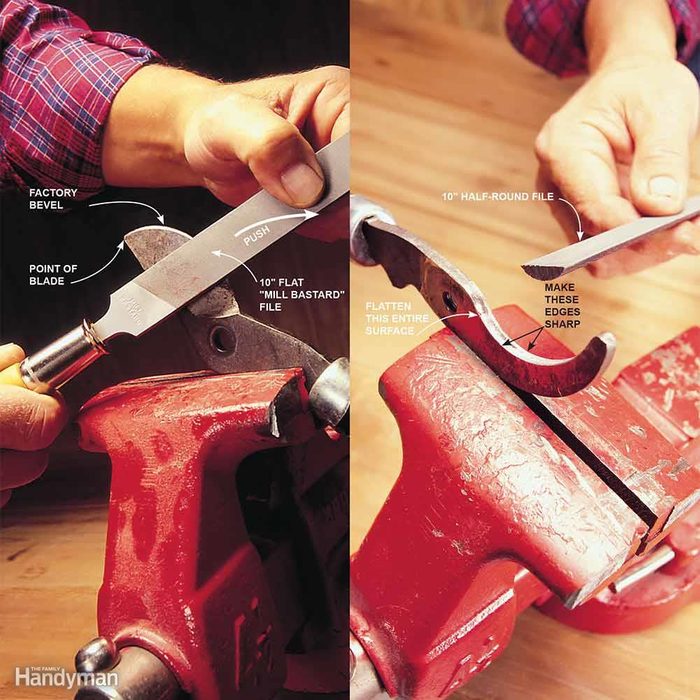
Get Rid of Bad Branches

Prune One-Third of a Bush's Canes

First-Year Bush Pruning

Avoid Flattop Bush Pruning

Prune Entire Branches
If neglected, many bushes get too big and dense. While the foliage might look OK this year, next year it just might be too big to prune back without butchering it. Instead, it's better to control size and shape by selectively pruning out a few entire branches each year. Cut them at a larger branch or the trunk. This also opens the plant to light and encourages healthy growth from the interior.

Prune Evergreens Lightly

Cut a Branch at the Collar

How to Remove a Bush
If you have bushes that you want to remove, here's how to get the roots out without hours of digging and chopping.
Use leverage. Start by digging around the base and cutting all the roots you can get at. Then lay scraps of plywood on each side of the bush. Set a jack stand or concrete blocks on one side and set up your jack on the other. Lay a beam across them and tie the root to the beam with a chain. You'll apply hundreds of pounds of pulling force, so both the beam and the chain must be strong. Use a 6-ft. 4x6 or 6x6 for the beam and a chain for towing cars. Raise the jack, stopping to cut the roots as they become exposed. If you max out the height of your jack before all the roots are free, add a few blocks to increase the beam height.
Caution: Before cutting the roots, reduce tension on the chain to prevent injuries from recoil. Wear eye protection.

How to Sharpen Pruning Shears
Pruning shears are by far the fussiest garden tool to sharpen. The principle is the same as for hedge shears, but filing along the curved blade asks a great deal of your fine motor skills. The other half of the pruning shears has a thick, blunt blade that the sharp curved blade cuts against. This heavier blunt blade is one reason this tool is able to cut branches more than 1 in. thick.
First, file along the factory bevel. File the edge of the pruning blade using two hands. Start at the point and follow the curve of the factory bevel. Make one complete stroke from the point to the base of the blade. Apply light pressure in a direction away from you. Examine the edge after each stroke of the file to ensure you're following the path of the factory bevel. Once you've exposed fresh steel along a consistent curve, feel the back side for burrs. Sand away the burrs.
Then, file the blunt blade so it's flat. The blunt blade needs a crisp 90-degree edge. Think of the edge on a freshly cut piece of granite. Both the top and the side surfaces are flat, and where they meet you'll find a crisp, sharp edge. File along the factory bevel. Using a smooth 10-in. half-round file, file the inside curve of the blunt blade perfectly flat. Use two hands for control. Make sure you hold the file exactly 90 degrees to the inside curve. Once this surface is flat, sand both side surfaces of the blade with 300-grit paper to get rid of any burrs.

How to Sharpen Hedge Shears
Before sharpening hedge shears, check the pivot nut. The nut should be snug with no play. If the shears still cut poorly, look down each blade to make sure it's not bent. If a blade is slightly bent, loosen the pivot nut and separate the blades. To straighten the blade, put it in a vise, slip on some thick leather gloves and tweak it until it's straight.
Next, file the edge to expose clean metal. Examine the factory edge. Hold the file with both hands and mimic the direction of the bevel. Now move the file in one broad stroke away from you along the entire cutting angle. Don't use small, jerky strokes or you'll lose the factory edge. As you work, you can see the clean metal path left by the file. Adjust your angle as needed to file the entire edge evenly. Repeat this motion several times until you expose clean metal over the whole edge. Usually it'll take only about 10 strokes. Do the same with the other blade.
Finally, sand the back side of the blade. Place a sheet of 300-grit wet/dry sandpaper on a smooth, flat piece of plywood. You'll be able to feel the burrs (be careful?they're sharp) on the back side of each blade. To remove them, lightly sand the back side of the blade. Keep the blade flat and move it in a circular motion. After making several circles, pick up the blade and gently feel the edge. When the burrs are gone, assemble the blades and lightly oil the moving parts with 3-In-One oil.

Trouble-Free Tree Pruning
Prune midsize branches without damaging the tree by cutting them in three stages. Make the first cut (1) on the underside about 8 in. from the trunk, cutting a third of the way up. Make the next cut (2) at the top of the branch 3 in. past the first cut.
Finally, cut the remaining stump off at the trunk, just past the slightly raised area, called the branch bark ridge, making the cut perpendicular to the branch to minimize the exposed surface.
